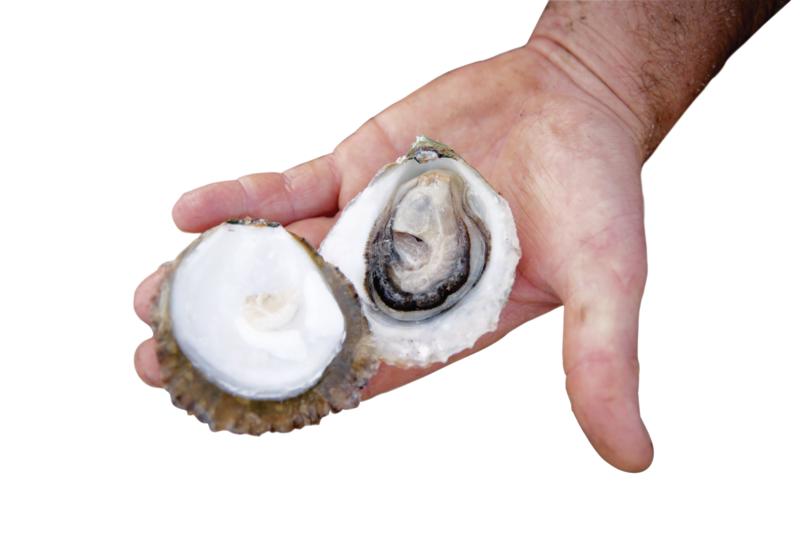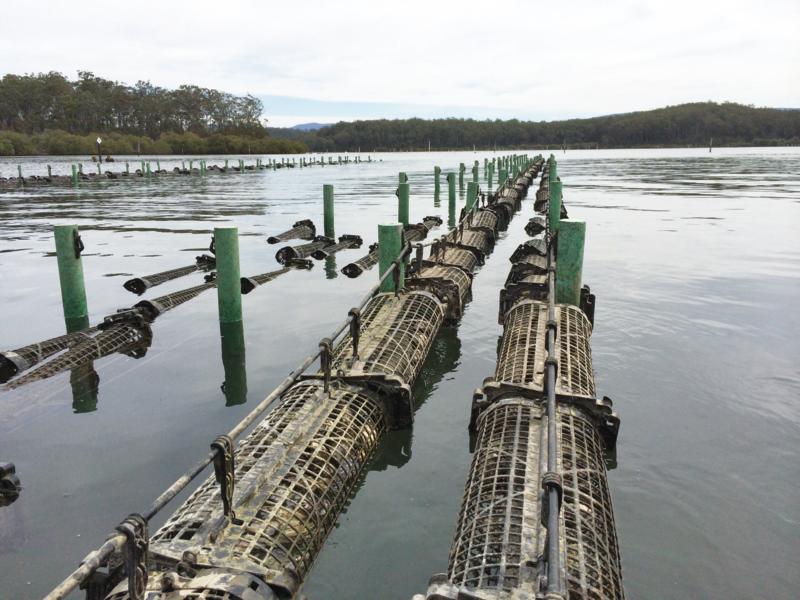Twenty-eight years ago, my husband Kel and I said goodbye to our busy city life and headed to Wonboyn Lake on the coast of South East NSW. We were looking for a sea change and both of us fell in love with the pristine environment and opportunities living on a beautiful lake has to offer.
Wonboyn Lake sits between the Nadgee Nature Reserve and Ben Boyd National Park and it’s the southernmost estuary in NSW where you can grow Sydney Rock Oysters. We purchased our first lease here in 1990 and gradually grew the business.
Today, we farm seven hectares of oyster leases using environmentally-friendly baskets and bags that float in the water housing our oysters until they mature. We love what we do and we’re proud of our great product, but sadly not all our oysters make it to market because theft is a growing problem.
Nobody really knows how widespread oyster theft is, as there are no statistics available and many farmers just accept theft as a loss and don’t report it. What we do know is that stealing oysters will raise a serious biosecurity threat, and the possible health ramifications could wreak havoc on the whole industry.
“Thieves are not members of our quality assurance program and when they steal oysters they don’t know if they are safe for human consumption or not.”
All oysters are farmed under an aquaculture permit from
NSW Department of Primary Industries and harvested under a quality assurance program with the
NSW Food Authority. Every estuary has its own unique management plan depending on where it’s situated and through this plan, we test our estuarine water for possible contamination after heavy rains and we do fortnightly checks for possible algal blooms. This ensures oyster lovers can be confident the oysters they buy from us are safe to eat and enjoy.
Thieves are not members of our quality assurance program and when they steal oysters they don’t know if they are safe for human consumption or not. They don’t have a clue about the condition of the estuary and this is a real concern.
Not only can eating contaminated molluscs make people very sick but when the media reports on an oyster death or on people becoming ill from eating them, it has a domino effect that trickles all the way down through the industry. Consumers become more cautious and less likely to buy oysters. Events like this can be devastating.
*READ MORE about the importance of biosecurity and protection against pests and disease:
-
Biosecurity: keeping your farm safe
-
Australia’s clean and green image vital for trade
-
Controlling the carp population: herpes virus
-
Sorghum crops contaminated with shattercane
-
Blockchain boosts supply-chain provenance and traceability
 Caroline says that, “...the main thing we need to do is educate consumers. People need to know that if they spot some lovely oysters for sales, they should ask the seller where they come from.”
Caroline says that, “...the main thing we need to do is educate consumers. People need to know that if they spot some lovely oysters for sales, they should ask the seller where they come from.”
It’s disheartening when people think taking oysters while they’re out on the lake isn’t a crime. They assume the farmer has millions more in the water and won’t notice if a few dozen go missing. But if everybody took just a few dozen oysters, there wouldn’t be a lot left for the farmer to sell.
These opportunistic thefts are usually committed by people who have been out fishing on the lake and haven’t caught anything. They don’t want to go home empty-handed, so they open a bag of oysters and help themselves.
Sometimes they don’t even bother to undo the bag, they simply cut a hole in it rendering it useless. They then carry their booty home and think nothing of it, but the farmer has to replace that infrastructure.
This results in a significant cost to the farmer, not only for the new bags but also in lost production. We don’t need more expenses or time out from doing what we love, which is growing good quality oysters.
*READ more about the prevalence of theft across regional NSW: “Rural crime wave”.
OYSTER BLACK MARKET - A HUGE LOSS FOR FARMERS
Oyster thieves supplying the black market are a bigger problem for farmers. These thieves take much larger quantities and the economic loss to the farmer can be in the tens of thousands of dollars. And that’s not just in the value of the oysters that are stolen.
It takes three to four years for a Sydney Rock Oyster to grow to market size and during that time it’s a labour-intensive business, so all the hours spent growing, drying and grading those oysters has also been lost.
Farmers do look after each other. If we see somebody paddling about on another farmer’s lease we will go and take a look. If potential thieves see you checking them out, it may deter them from putting their hand in a bag and helping themselves.
We put up signs highlighting that oyster theft is an offence and warning people they can be fined for interfering with an oyster lease. Sometimes we also install surveillance cameras but the main thing we need to do is educate consumers.
People need to know that if they spot some lovely oysters for sale, they should ask the seller where they come from. If no information about where and when they were harvested is forthcoming, that should ring alarm bells.

Sydney Rock Oysters take three to four years of labour-intensive business to grow to market size. When thieves strike, it means the loss of hours spent growing, drying and grading the oysters.
If people only buy oysters from reputable sellers and check that they’re tagged with the name of the grower, the lease they came from and the date they were harvested, you can be assured the product you have bought has been purchased legally and is safe to eat. The black market will dry up if nobody buys from it.
*These are Caroline’s personal views. If you would like to be ‘On my soapbox’ in a future issue of The Farmer, email: [email protected] or write to: The Farmer, Suite 53/26-32 Pirrama Rd, Pyrmont, NSW 2009. If your topic is chosen, a journalist will be in touch.